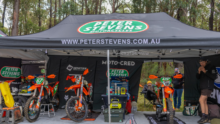Seeking service efficiency
Service departments are messy by nature, but their importance in terms of customer satisfaction and loyalty cannot be overlooked. While the front-of-the-house staff greets the customer and usually establishes the initial relationship, the service department is where that relationship is tested in times of trial. When customers bring in a vehicle in need of repair, will they leave overjoyed with your store, merely satisfied or take-to-the-web outraged?
Aside from avoiding customer complaints or taking a hit on CSI scores, your dealership’s service presentation helps or hurts customer loyalty. Your profitability, unit sales, referral business and overall reputation are on the line.
There are also nuts-and-bolts issues like staffing and the physical layout of the service operation that are equally crucial, impacting efficiency, technician productivity and team morale. If your staff is wasting its time (or your own), job satisfaction will take a hit as the department’s profitability suffers.
We spoke with two dealerships recognized for their service operations, as well as industry trainer Valerie Ziebron of Yamaha Marine University, for their takes on making easy changes that will improve your service presentation from the inside out.
Team Winnebagoland
Single location
Oshkosh, Wis.
Tom Van Zeeland, general manager at Team Winnebagoland in Oshkosh, Wis., is the third generation of his family running a multi-line dealership that sells Yamaha, Kawasaki and Polaris. It’s a $10 million store located in a large facility built in 1995, where service consistently accounts for 10 percent of the annual bottom line, helping it attain Power 50 status by Powersports Business in 2013.
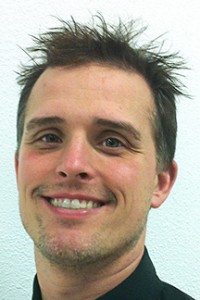
The service shop has six lifts, five technicians, two lot technicians, a pair of service writers and a department manager. By adding an additional part-time service writer for more one-on-one time with customers, as well as extensive department-wide training in recent years, Team Winnebagoland is focused on building quality relationships with its service customers.
Van Zeeland is admittedly a non-technical guy. His personality, combined with experience with his Spader Business Management 20 group and training with Gart Sutton & Associates (GSA), Sam Dantzler and Ziebron, has led him to focus the company’s efforts on “the show” — crafting a presentation that gives customers a memorable experience when coming through the service department.
“Every department is here to put on a show and give the customer the best experience,” he said.
That mindset has included focusing on every aspect of the experience — prompt customer greetings, installing an exterior camera so staff can help customers load and unload machines, bringing all unit buyers on a full tour of the business, carefully orchestrated hand-offs between departments, service walk-arounds to ensure all problems are caught before starting a repair and promoting its VIP maintenance program that has become a significant profit center for the business.
“One of the things that we try to practice is to get out from behind the service counter, go out and take a look at the customer’s unit, walk around, look for issues, pad their ego a little bit and tell them how cool their machine is, make them feel unique and special while you’re out there looking at the unit, but also looking for opportunities to upsell,” Van Zeeland said. “It’s an extra couple of minutes that we get to build the trust with the customer, and that’s really why this year we started with a third service writer.”
The VIP prepaid maintenance program has been adopted by approximately 30 percent of new unit customers, which is a significant increase in recent years. After recent training with Steve Dodds of GSA, Team Winnebagoland significantly improved the program’s take-rate by requiring all departments to speak with customers about the program. Any sales prices quoted include the VIP service package, helping to seamlessly integrate that purchase into the discussion from the first step.
“The products we’re selling right now are really getting bulletproof. We’re not replacing pistons and rings anymore,” he said. “Now we’re trying to sell maintenance and one of the best ways to do that is through our VIP maintenance package. You get to sign up for five services before you even leave the door after you bought your unit.”
Another change has been the addition of a VIP lounge where service customers can wait for service in a comfortable environment. There’s a kid’s corner, Netflix-equipped TV, hot dog roller, popcorn maker and a refrigerator full of soda and snacks.
Van Zeeland said the improved penetration rates with the service program — which the company has had for at least 10 years — is a result of a cultural change in the business that has happened within the past year and a half.
Physically, the dealership is located in a relatively new, large space, yet the changes in products in that time have made the space less than ideal for the larger products customers are bringing in.
“In 1995 when we opened this store, we were selling Kawasaki Bayou 300s and small cruiser bikes. Now we’re selling 100-plus UTVs and jet boats that are 24 feet, so we could use more room,” he said. “Ideally I’d love to have two lifts per technician — we just don’t have the footprint to do that.”
The dealership’s technician pay plans are outliers in an industry that’s largely adopted efficiency-based incentives. In an effort to foster team spirit that remains a key part of the company culture, the entire dealership staff is paid hourly or by salary, with significant profit sharing at the end of the year for every employee.
One of Team Winnebagoland’s goals for 2014 is putting up a “big board” in the service department that tracks technician efficiency, total service dollars and service specials promotions to see if, like several trainers have suggested, merely tracking and posting the numbers will lead to increased efficiency by harnessing his staff’s natural competitive spirit.
“I play pickup basketball two to three times a week, and the intensity turns up when the score is getting closer,” Van Zeeland said. “If you’re putting a number up there, people want to do better than their number.”
For stores that are newer to the game, or haven’t been exposed to as much industry training, Van Zeeland recommends focusing on general organization and cleanliness to begin improving the service department. Beyond that, he said, the focus should be on hiring people that genuinely care about the department, the overall business and building customer loyalty.
“It’s not selling the unit; it’s what happens after the sale,” he said. “If your service department is good and approachable with a ‘yes’ mentality, you’ll do well, but you have to have the support system to do that.”
Kent Powersports
Three locations
Austin and San Antonio, Texas
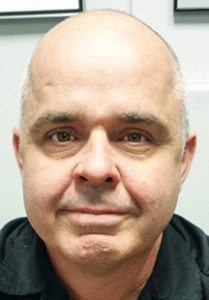
Ron Roemer is a former technician and now the service manager at Kent Powersports in Selma, Texas, a suburb of San Antonio. Kent is a two-store operation, with the other located 40 minutes northeast of Selma on the outskirts of Austin.
As part of a large, 40,000 square-foot facility built five years ago, Roemer’s service shop has 12 employees, with six full-time technicians and two lifts for every tech on the floor. Service accounts for approximately 30 percent of the overall business at the Selma store.
Roemer said the biggest challenge in service is staying competitive with other dealers, developing creative ideas to draw new customers and attracting and maintaining quality employees, particularly technicians.
“We just don’t have techs banging the door down here,” he said. “Everybody comes in and says they’re a technician, but when you put them on the line they end up screwing something up or you find out that they’ve got some baggage that they brought along with them that’s not so desirable.”
As an example of keeping up with the competition, with a recent tire special, Kent offered half-priced tires when customers paid retail for labor. A nearby competitor, in turn, offered labor for $30 when customers paid full retail price for the tires.
“It sounds good to half a dozen people, and the other half dozen go there,” he said. “So we’re trying to find something that attracts everyone.”
Recognizing that its shop rate was below average for the area, Roemer recently raised it to $99.50 per hour for everything except watercraft, which is $119.50. Kent’s rate is still below most competitors, which helps attract new customers and brings more money into the service department’s coffers.
When it comes to making basic improvements in service, Roemer advocates thinking simply by focusing on setting up an efficient floor layout, providing techs with specialty tools and lots of teardown space, and maintaining a clean environment.
By providing two lifts per technician and individual workspaces, the staff can work on multiple projects at a time with plenty of space to spare. Roemer added that, if the time comes, they could likely accommodate two technicians in each stall.
For large-scale future expansion, he has studied adding a second floor to the department. By adding an additional support column with connecting I-beams, Kent could significantly free up warehouse space with all of the boxes and crates that are currently stored there. An elevator would bring units down when they were sold, speeding delivery time, and customers could be brought there to show specific vehicles if they didn’t have a similar model on the floor.
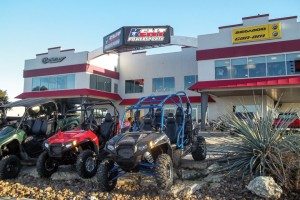
He estimates the project would cost $100,000, and is not in the current plans.
The dealership tracks its service team member efficiency and productivity through its ADP Lightspeed NXT software. Roemer doesn’t post the numbers on a leaderboard, as some of his techs are dedicated to solving the most challenging problems and he’s worried about fostering animosity among the staff. Instead of broadcasting the numbers, the information is monitored by management and shared with staff members individually.
“I try to let them know they’re doing a good job,” he said. “If we can point out areas of improvement during the process, we can usually define what that is by judging the hours they’ve turned versus the hours they’re available.”
Rather than incentivizing with efficiency, all Kent Powersports techs are paid on a flat rate, with niceties like the occasional free lunch, flexible scheduling and supplies like gloves, uniform purchase assistance and specialty tools for specific projects.
To improve its customer service, Roemer places a focus on hiring service writers with the right traits — outgoing, friendly and people who care about their appearance. He also seeks out service writers with enough technical know-how to understand the customers, but not so much that they attempt to diagnose problems from the desk.
“My guys are instructed to list the complaint verbatim from the customer,” Roemer said. “Don’t try to read into a diagnosis, get as much information as you can and then we can pass that along to the technician. It helps in the diagnosis of the unit if you can describe exactly what the customer says because … there are clues in there.”
Other initiatives include a 10-foot rule, which requires that all staff must acknowledge any customers that come within 10 feet of them to ensure nobody has been ignored or left without a prompt greeting.
The company has also focused on maintaining and advancing technician certifications and training. Several mechanics are Honda Red Level Certified, including Roemer, and all are encouraged to complete online training courses during any downtime.
As a result, Kent Powersports has improved customer loyalty and received the Suzuki Super Service Award two out of the last three years.
When asked what advice he would provide to service managers just starting out or with less training, Roemer suggests remaining consistent and following through on all promises to customers.
“A promise is a promise. When you start breaking those, you start losing the trust of the people [whose business] you’re trying to capture,” he said.
The trainer says…
Grounded by her experience in the field, Valerie Ziebron is a service-minded trainer with a well-earned reputation through her independent work and also as a consultant for Yamaha Marine University.
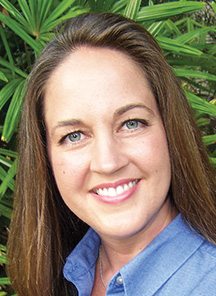
Like Van Zeeland, Ziebron urges business owners and managers to monitor key service metrics that provide a foundation for creating improvements that are customized to your staff and business. Such metrics include service efficiency, hours per work order and service absorption, which is the percentage of the entire dealership’s operating expenses that flow through the service department.
Part of her approach focuses on writing accurate job descriptions for service department staff, making sure they reflect everyone’s recurring duties. She suggests management create an organizational chart to make sure all duties are accounted for. Knowing what is expected of everyone can also help improve staff job satisfaction, and can act as a guidebook when it’s time to add service employees.
While some stores have the luxury of support staff to allow technicians to focus on turning wrenches, others have fewer bodies and need to delegate tasks as they come, such as shoveling snow in northern states. Ziebron says either approach is agreeable, as long as everybody knows what’s expected of him or her and is incentivized accordingly.
“Whenever someone isn’t turning wrenches, none of us are making money, so it’s a natural desire for a lot of upper management to say we need more people to help keep that happening,” Ziebron said. “But that still might not give me 100 percent efficiency.”
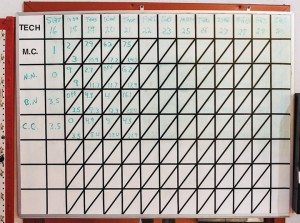
Creating a simple organizational chart that shows everyone’s job duties — including all tasks — often results in two simple scenarios in Ziebron’s eyes.
“It’s either we have too many chiefs and not enough Indians or we have so many Indians and technicians and not enough management,” she said. “Or we don’t have someone dedicated to service writing, and that is another one of those situations where you think, ‘Can I afford a service writer?’ but you really can’t not.”
Once an org chart is in place, pay plans can easily be created that reward service staff for their contributions to the business, not just service efficiency. If you have an experienced tech assisting newer wrenchers, for example, pay plans could be modified to focus on the overall shop efficiency, to incentivize based on the novice tech’s efficiency or any other method that works while encouraging them to focus on the efficiency on the department as a whole.
“The weird Holy Grail in service is coming up with that perfect pay plan, but as I’ve said, there is no such thing,” Ziebron said. “I’ve seen the exact same plan fail miserably or work miraculously, so it’s really knowing your team.”
While supporting service staff can be considered a luxury in mom-and-pop-style shops, Ziebron recommends all service departments add a service writer if possible, which she says is “the number one person in the dealership who is going to build your customer loyalty.”
The importance of the position, she says, comes from the amount of time a service writer spends with customers compared to other dealership personnel like sales people, parts staff and technicians.
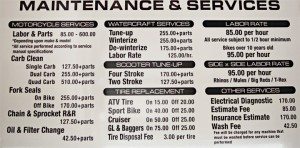
“You’re going to spend so much more time with your service writer than you will with any other person in that business,” she added. “And you’re coming to that service writer when, chances are, things aren’t always perfect. How this person is going to handle this is either going to make customers say, ‘I love this place, I wouldn’t go anywhere else,’ or ‘To hell with them, I’m out of here.’”
While basic technological knowledge or sales training could be a benefit, Ziebron said too much technical know-how could naturally lead to a service writer that seeks to diagnose problems, which can lead to work orders with incorrect or incomplete information. Instead, she advocates, service writers need the right personality to function like an excellent server when the phone is ringing, stressed customers are waiting and salesmen have questions.
“A service writer has to be someone who can juggle a million things in the sky with a smile on their face,” Ziebron said. “I think of it more like a really skilled waiter, someone who has sat 20 tables all at once but remembers the lemon for this table and the extra barbecue sauce for you and has a smile on their face the whole time and keeps their priorities straight.”
When it comes to the physical layout of your service facility, Ziebron says companies should focus on incremental improvements that involve the staff to tap into their knowledge and ideas, as well as creating a culture where people with ideas speak up.
“So many times when I listen to the ideas from a team member, they’re actually coming up with ideas that would make the place more money and make the place a better place to work,” she said. “But management has it stuck in their head that it should be a certain way. It really requires us letting go of some of those notions and saying we’re still getting the same end result.”



